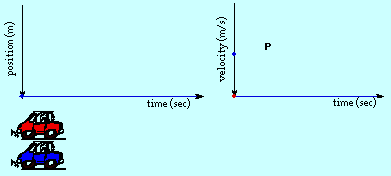Mechanics: 1-Dimensional Kinematics
1-Dimensional Kinematics: Audio Guided Solution
 Extra Problem 15:
Extra Problem 15:
A red car is sitting at a stop light at rest. When the light turns green two things happen simultaneously; (1) the red car accelerates to a speed of 32.7 m/s in 8.48 seconds and then maintains that 32.7 m/s speed and (2) a blue car passes by the red car at a constant speed of 21.4 m/s. How much time (in seconds) will have elapsed from when the light turned green until the two cars are side-by-side?
Audio Guided Solution
Read About It!
Get more information on the topic of 1-Dimensional Kinematics at The Physics Classroom Tutorial.
Return to Original Problem Set
Return to Index of Extra Problems
Return to Overview
Habits of an Effective Problem Solver
An effective problem solver by habit approaches a physics problem in a manner that reflects a collection of disciplined habits. An effective problem-solver...
-
...reads the problem carefully and develops a mental picture of the physical situation. If needed, they sketch a simple diagram of the physical situation to help visualize it.
-
...identifies the known and unknown quantities in an organized manner, often times recording them on the diagram iteself. They equate given values to the symbols used to represent the corresponding quantity (e.g., vo = 0 m/s; a = 4.2 m/s/s; vf = 22.9 m/s; d = ???.).
-
...plots a strategy for solving for the unknown quantity; the strategy will typically center around the use of physics equations be heavily dependent upon an understaning of physics principles.
-
...identifies the appropriate formula(s) to use, often times writing them down. Where needed, they perform the needed conversion of quantities into the proper unit.
-
...performs substitutions and algebraic manipulations in order to solve for the unknown quantity.